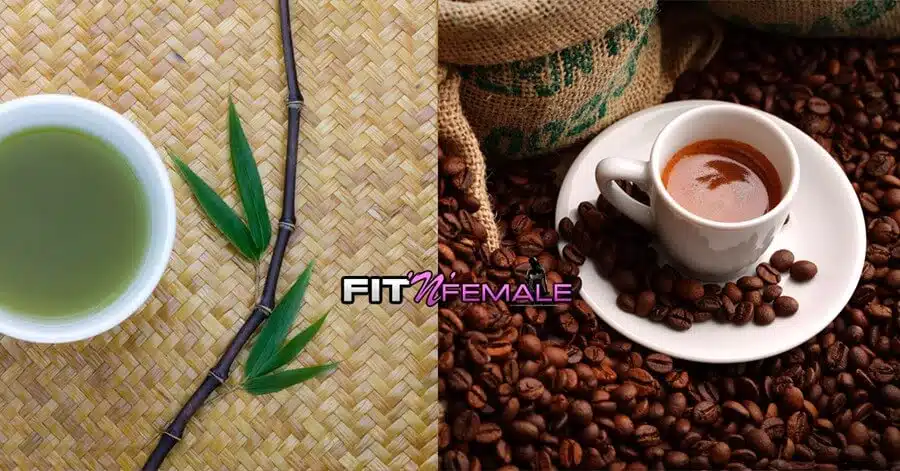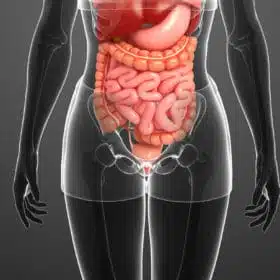It is certainly no secret when we claim that Caffeine is as much a part of daily life for many people in this country as the air they breathe. A study from the U.S. that took a closer look at this very claim confirms this, at least for the land of unlimited opportunity. On average, around 90 percent of all adults there consume caffeine on a more or less regular basis, a figure that is certainly transferable in view of the exorbitant consumption of cola and coffee in this country. While the majority of the population is content with rather low daily doses of 150-240 milligrams on average, the top ten percent provide a major peak in the consumption curve with an intake of 500-1100 milligrams per day. We strength athletes are almost certainly in this range, so it's interesting to know the sources of our daily caffeine intake. Contrary to what you might think, it's not always the same source. On the contrary, the different sources have their own advantages and disadvantages that you can take advantage of in your training.
Anhydric caffeine
This special form, also known as 1,3,7-trimethylxanthine, is the most common variant, which is used in most pre-workout supplements, not least because of its low cost. The great advantage of this synthetic form, however, is that the substance can be easily absorbed by the organism, as evidenced by the fact that only a fraction of a good two percent is excreted unused in the urine. As scientific studies have shown, taking it 30-60 minutes before training leads to significant increases in performance in the area of strength as well as in relation to strength endurance. In the latter context in particular, sports scientists were able to determine in the course of a study with endurance athletes that an exemplary dose of a good 5 milligrams per kilogram of body weight was able to reduce fatigue resistance by up to 23 percent in an endurance test. In addition, the proportion of body fat used for energy production increased by 3 percent under the same conditions. It is therefore obvious that the use of stimulants has numerous advantages for us athletes. Now, however, one could assume that instead of caffeine-containing supplements, our kind could rely on the use of natural sources such as coffee. In principle, this is also correct, but coffee, for example, contains numerous other substances that can dampen the stimulating effect of caffeine, so that larger amounts must be ingested. However, athletes who tend to have a nervous stomach might find this problematic, so training boosters that contain anhydrous caffeine have a clear advantage.
Caffeine Citrate
In contrast to other dosage forms, caffeine citrate has not yet been researched too thoroughly from a scientific point of view, so that there are currently only a handful of studies in which caffeine citrate has been examined in terms of its mode of action compared to other types of caffeine. Nevertheless, it is a fact that caffeine citrate has a better solubility, not least because of the lower caffeine content per milligram, but in return it proves to be less stable. In the haze of the dietary supplement industry, caffeine citrate is becoming increasingly popular mainly due to its low pH value, which positively influences the shelf life of the products.
Di-caffeine malate
This dosage form of caffeine is a form of stimulant that is somewhat more concentrated than, for example, caffeine citrate. According to the supplement industry, the molecular structure allows the substance to be absorbed into the blood just as quickly as pure anhydrous caffeine. In practice, therefore, a similarly strong effect is supposed to unfold, but without the stomach being too irritated, which is supposed to suit many athletes. Unfortunately, to date there are no pharmacokinetic findings that would substantially support the pronouncements of the manufacturers. So there is currently no reason to assume a serious superiority over other dosage forms.
Herbal caffeine varieties
Below you will find the most popular herbal sources of caffeine, which are also used for the production of dietary supplements, among others.
Tea extracts
Most people know that coffee contains caffeine, but the fact that the leaves and shoots of the tea plant also contain caffeine comes as a surprise to many. To be precise, tea extract, which can also be found on various labels under the name green tea extract, oolong tea or camellia sinensis, began its triumphant advance as an ingredient in fitness products parallel to the disappearance of ephedrine. However, tea extracts do not owe their popularity exclusively to their natural caffeine content, but also to various antioxidants, such as catechins, which can also have a stimulating effect on the metabolism. The ratio of pure caffeine to the concentration of antioxidants depends on the type of tea on which the extract is based. While the pure caffeine concentration is highest in black tea, for example, green tea has a significantly higher catechin content. Since antioxidants can have an anti-inflammatory effect according to scientific findings, the consumption of teas or supplements containing tea extracts is definitely worth considering.
Guarana
The stimulating effect of guarana was already known to the indigenous peoples of South and Central America, who used the brownish powder obtained from the seeds and fruit of the plant of the same name for ritual purposes, among other things. Guarana is used in the industry not only as a stimulant, but also as a flavor-bearing component, as the powder has a slightly fruity aroma. However, the greatest advantage of the powder, which is easily soluble in water, is that it does not develop its effect in one fell swoop, but rather evenly over many hours. As a result, the heart rate, for example, does not increase as drastically at the same dosage as in the case of conventional caffeine. For particularly sensitive people, less unpleasant side effects such as heart palpitations or restlessness occur in the course of consumption. Those who can do without a short but intense caffeine kick, for example, but are instead looking to optimize the performance of the central nervous system for up to eight hours, should try guarana as an alternative.
Coffee extract
What applies in the field of teas, of course, retains its validity in the case of coffee. Coffee extracts are usually extracted from the raw coffee beans or alternatively from the whole coffee fruit. Similar to the tea extracts mentioned earlier, coffee extracts also contain a wide variety of antioxidants in addition to the natural caffeine, which resemble the synthetically produced anhydrous form of caffeine in terms of performance-enhancing properties down to the last detail, bringing with them the corresponding health-promoting properties. So if you explicitly want to make sure to use a natural caffeine source, you should reach for coffee extract if possible, respectively reach for corresponding boosters. On the label, coffee extracts are sometimes also indicated under the name Coffea arabica or Purecaf.
Kola
As early as the 19th century, the kola nut was used by the U.S. effervescent company Coca-Cola as a source of caffeine for its brown lemonade, which at that time was still sold over the counter as a medicine. Today, however, cola extract has largely disappeared from the food industry, although this does not mean that it has completely vanished into insignificance. In particular, companies that pay attention to natural ingredients are increasingly using kola nut extract. Scientific studies with rodents and rabbits also show that kola nut is a potent source of caffeine, as there are hardly any significant differences in its effects compared to synthetically produced caffeine. The other side of the coin, however, is that high doses of, for example, 1.5 milligrams per kilogram of body weight per day led to a reduction in sperm production and testosterone levels, at least in rats. It is therefore advisable not to rely exclusively on cola extract as a source of caffeine.
Mate
The last source of caffeine we want to turn to is the mate plant, which is becoming increasingly popular in our latitudes in the form of teas. Similar to comparable tea extracts, mate extract contains numerous antioxidants and secondary plant compounds in addition to the actual stimulant, which have an anti-inflammatory effect and can have a positive influence on blood lipid levels. In addition, large-scale studies showed that taking four to six milligrams over a period of three weeks not only resulted in higher fat burning, but also measurably curbed appetite. What is problematic about mate extracts, however, is the fact that the caffeine content varies from two to fifty percent, depending on the product. To avoid unpleasant surprises, it is therefore recommended to consume mate only as a supplement and exclusively in the form of tea.




